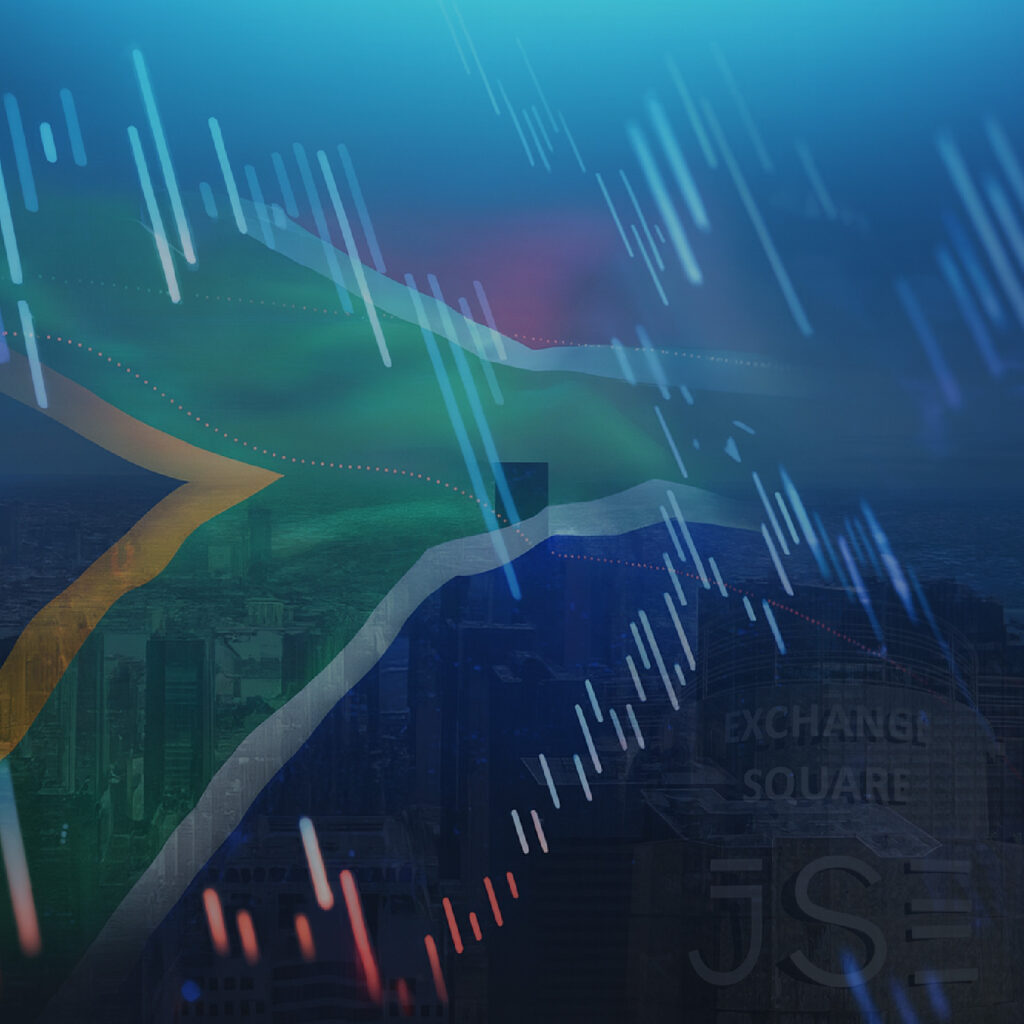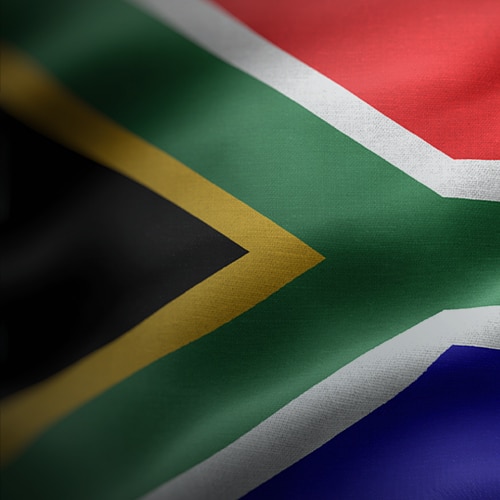Coffee Table Economics (CTE) with Anchor, by Casey Sprake, is distributed periodically. CTE is a compilation of Casey’s research, analysis, and perspectives on key South African (SA) and global economic data such as inflation, spending trends, and international market dynamics, including socio-political events and the multiple factors shaping the world economy.
Executive summary
In this week’s edition, we highlight the following:
- Gold’s great divide: Market trends, central bank moves, and economic uncertainty. The global gold market is experiencing a structural and cyclical shift, driven by surging demand in key markets and a broader realignment of investor sentiment amid economic uncertainty. As the macroeconomic environment remains turbulent, gold is likely to maintain its upward trajectory, influencing not just commodities markets but broader capital allocation strategies across the globe.
- Reshoring ambitions: Trump’s manufacturing push and the global industrial landscape. While the US push to restore manufacturing might resonate politically, especially amid concerns over supply chain resilience and national security, its economic payoff remains uncertain. Without a parallel investment in workforce development, infrastructure, and innovation, tariffs alone may not be enough to close the manufacturing gap with China or replicate the success of other global industrial leaders.
- SA inflation eases again, but will the SARB blink? SA’s March CPI surprised to the downside, rising just 2.7% YoY – well below market expectations. The March inflation print reinforces the idea that monetary tightening has run its course. Now the question is whether the South African Reserve Bank (SARB) feels confident enough to continue through the rate-cutting cycle and when.
Gold’s great divide: Market trends, central bank moves, and economic uncertainty
The global gold market is experiencing a structural and cyclical shift, driven by surging demand in key markets and a broader realignment of investor sentiment amid economic uncertainty. At the heart of this dynamic are India and China – two economic powerhouses with vastly different supply-demand profiles. India’s demand for gold remains unmatched, primarily driven by its deep cultural and religious ties to the metal. Gold is not only seen as a symbol of wealth and status but also as a store of value, particularly in times of financial instability. In 2023, India’s consumption was a staggering 50 times greater than its domestic production, underscoring the country’s heavy reliance on imports. This demand is largely jewellery-driven and reinforced by traditions, particularly in Hindu and Jain communities.
China, on the other hand, while also a major gold consumer, is better positioned to meet its demand through local production, producing over one-third of the gold it consumes. In addition to consumer demand, China’s central bank has been aggressively increasing its reserves, adding 316 tonnes since 2022. This reflects a strategic shift by the People’s Bank of China (PBOC) to hedge against inflation, reduce dependency on the US dollar, and manage currency risk. The divergence in domestic supply vs demand is not unique to these two nations. The US, Türkiye, and several other countries also show significant supply gaps. For example, the US consumed 249 tonnes of gold in 2023 but produced only 167 tonnes, while Türkiye’s demand outstripped its production by a factor of five.
Amid these national imbalances, the broader macroeconomic backdrop has become increasingly supportive of gold. Rising financial market volatility, driven in part by renewed global trade tensions (particularly around US tariff policies), has elevated fears of a recession and slowed global growth expectations. This environment has weighed on industrial commodity demand but boosted the appeal of safe-haven assets like gold. Gold’s role as a hedge against uncertainty has only strengthened. Prices recently soared above US$3,500/oz, buoyed by robust physical demand and a surge in inventory flows into US commodity exchanges like COMEX. This spike was notably tied to geopolitical events, such as the run-up to the US’s “Liberation Day” tariff deadline on 2 April, which triggered a rush into physical gold. Interestingly, a divergence has emerged between gold-backed exchange-traded funds (ETFs) and futures exchange inventories. While COMEX inventories have surged to record highs, ETF holdings remain below their COVID-19 pandemic-era peaks. This suggests latent investment demand could flow into gold-backed ETFs in the near future, providing further price support.
The bottom line
The current gold market reflects a convergence of strong consumer demand, strategic central bank buying, and heightened global economic uncertainty. These forces have positioned gold as both a financial haven and a key indicator of investor sentiment. As the macroeconomic environment remains turbulent, gold is likely to maintain its upward trajectory, influencing not just commodities markets but broader capital allocation strategies across the globe.
Reshoring ambitions: Trump’s manufacturing push and the global industrial landscape
In a world increasingly shaped by global supply chains, the resurgence of nationalist industrial policy (particularly in the US) has reignited debate about the long-term viability and consequences of reshoring manufacturing. US President Donald Trump’s aggressive tariff strategy, aimed at bringing manufacturing jobs back to US soil, marked a dramatic pivot in US economic policy. Framed as a bid to rebuild domestic industry and deliver “better-paying American jobs making beautiful American-made cars, appliances, and other goods,” this policy stance came against the backdrop of a steadily widening manufacturing gap between the US and China. Since overtaking the US in 2010, China has firmly cemented its status as the world’s largest manufacturer. By 2023, China’s manufacturing sector added US$4.8trn in value, roughly 27% of its total economic output. Central to this dominance are its heavy industries, such as metallurgical and machine-building, which account for nearly 40% of industrial output. Additionally, sectors like fertilisers, synthetic fibres, and plastics bolster its production capacity, while consumer exports (ranging from clothing to electronics and toys) underscore its continued global reach.
The US, by contrast, has become less manufacturing-intensive, with the sector making up just over 10% of its economy. This relative decline has spurred political urgency, particularly from populist quarters, to reassert US industrial strength. Tariffs, as employed under Trump, were the blunt instrument used to disrupt the offshoring trend and incentivise domestic production. Yet while this approach aimed to rebalance trade deficits and reshore supply chains, it also raised costs for US businesses reliant on foreign inputs and led to retaliatory measures from the country’s trading partners. The broader economic implications of such a policy are complex. On the one hand, reshoring could theoretically strengthen domestic industries, create jobs, and reduce vulnerability to global disruptions, as witnessed during the COVID-19 pandemic. On the other hand, it may lead to higher consumer prices, inefficiencies from lost specialisation, and increased geopolitical friction. Global manufacturing powerhouses like Germany and Italy continue to thrive not by insulating their economies, but by excelling in high-value sectors like automotive engineering, machinery, and fashion, while staying deeply integrated with global markets.
Meanwhile, emerging industrial hubs such as Brazil, Saudi Arabia, and Türkiye show that manufacturing strength can be cultivated through sector-specific strategies and regional integration. Brazil’s aerospace and food processing industries, Saudi Arabia’s petrochemicals under Vision 2030, and Türkiye’s mix of traditional and advanced manufacturing point to diverse paths to industrial development.
The bottom line
While the US’s push to restore manufacturing might resonate politically, especially amid concerns over supply chain resilience and national security, its economic payoff remains uncertain. Without a parallel investment in workforce development, infrastructure, and innovation, tariffs alone may not be enough to close the manufacturing gap with China or replicate the success of other global industrial leaders. The path to revitalising US manufacturing will likely require more than protectionism; it will demand a coordinated, long-term industrial strategy.
SA inflation eases again, but will the SARB blink?
SA’s March CPI surprised to the downside, rising just 2.7% YoY – well below market expectations. This marks the lowest annual inflation print since mid-2020 and reflects a continued cooling in price pressures across the economy. MoM, inflation also slowed to 0.4%, down from 0.9% in February, reinforcing signs of a broad-based deceleration. A key contributor was the annual survey of education costs, which only happens in March. This year, the education price index rose by just 4.5%, compared to 6.4% in 2024. School fees increased 5.0% (down from 6.6%), while tertiary fees climbed only 3.7% (vs 5.9% a year ago). While education costs remain high in absolute terms, the slower pace of increase offered welcome relief for many households and played a notable role in the disinflation trend.
Core inflation, which strips out volatile items like food and energy, also eased to 3.1% YoY (from 3.4% in February) and 0.5% MoM (vs 1.1% previously). This suggests that underlying inflationary momentum is losing steam. Housing-related services, previously showing signs of reacceleration, remained subdued. Rental inflation nudged up only slightly to 2.6% YoY, highlighting persistent weakness in the property market. Vehicle prices continued to soften, and categories like clothing and footwear saw further disinflation, helped by a drop in import costs, particularly from China. Meanwhile, inflation in restaurants and accommodation also slowed, as seasonal festive demand faded.
Food and non-alcoholic beverages (FNAB) inflation ticked slightly lower to 2.7% YoY. Cereal-based products continued to reflect elevated maize prices from late 2024, but the pace of increases is levelling out. Meat prices, while still influenced by earlier cost pressures, appear to be nearing a peak, with MoM gains starting to taper off. However, price increases in categories like fish, vegetables, and fruit added some upward pressure. Overall, food inflation remains relatively modest, though second-round effects from higher farmgate prices are likely to persist into 2Q25. Fuel prices remained the single largest drag on headline inflation. Pump prices dropped 8.8% YoY and 0.4% MoM in March, with the trend expected to deepen in April after a 2.8% cut took effect. Preliminary data from the Central Energy Fund (CEF) suggest another 1% reduction is likely in early May. Weakness in global oil markets has helped keep local prices in check, even as the rand continues to show volatility. This has offered significant relief for consumers and businesses alike, particularly in transport and logistics.
The central question is: What are the implications of all this for monetary policy? With both headline and core inflation softening, the SARB’s Monetary Policy Committee (MPC) finds itself in a more flexible position. The real policy rate—the difference between the repo rate and inflation – remains deeply restrictive. This gives the SARB room to consider a more accommodative stance without immediately risking its inflation target. From a macro perspective, the case for easing has grown stronger. Wage growth remains muted, consumer demand is softening, and core inflation is trending lower. However, the SARB has been clear: it is committed to anchoring inflation expectations and maintaining financial stability. The rand remains a key vulnerability—any renewed depreciation could quickly unwind some of the recent inflation gains, particularly via food and fuel channels. Geopolitical tensions and diverging global monetary paths also add to the uncertainty.
The bottom line
With major central banks like the US Federal Reserve (Fed) and European Central Bank (ECB) expected to begin easing cycles in the coming months, pressure may mount on the SARB to follow suit. If global growth slows and capital flows become more volatile, SA could be forced into earlier or deeper rate cuts than currently anticipated. Markets are already positioning for this possibility, pricing in two 25-bpt cuts for 2025 (the first having taken place during the January MPC meeting), with a third beginning to look likely. Still, while the door to rate cuts is ajar, the SARB remains cautious. It is not yet ready to walk through at full tilt – at least not without greater clarity on domestic stability and external risks. The March inflation print reinforces the idea that monetary tightening has run its course. Now the question is whether the SARB feels confident enough to continue through the cutting cycle, and when.




